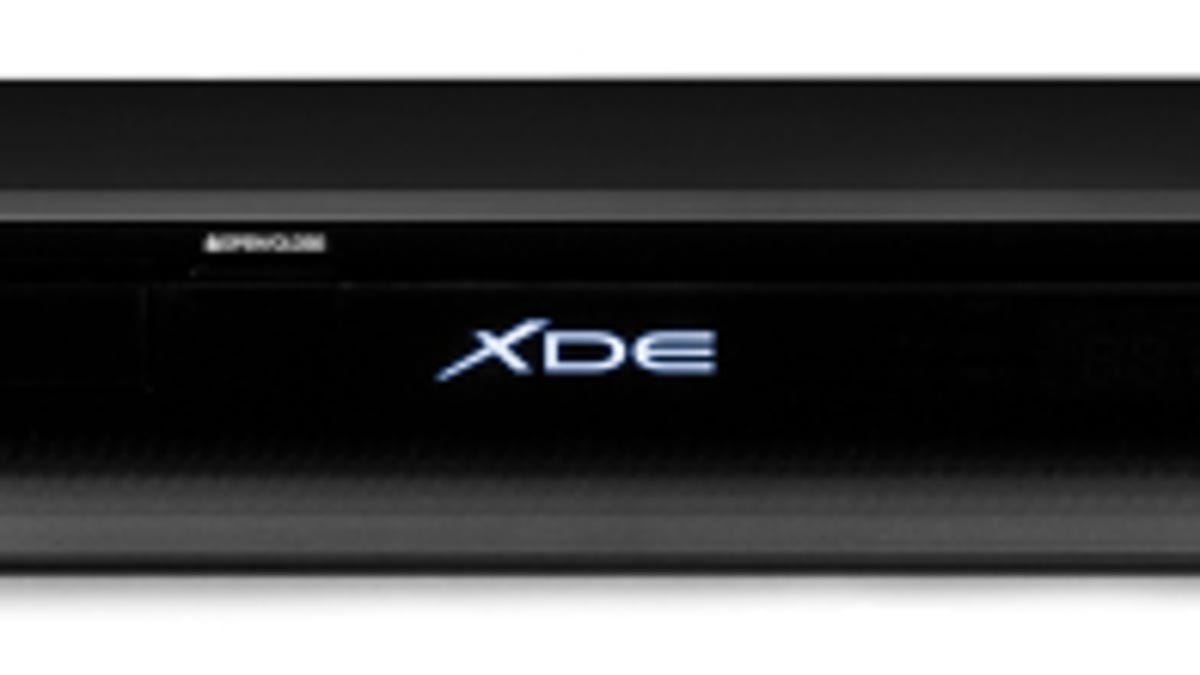Toshiba's XDE technology aims to get a little more out of your DVDs
Toshiba has announced its new XDE technology, which is designed to bring your existing DVD collection one step closer to HD, as well as the first DVD player featuring the technology, the XD-E500.

Almost six months ago to the day, Toshiba pulled the plug on HD DVD, conceding the high-definition format war to Blu-ray.
Since then, we've heard various rumors about Toshiba developing a super-upscaling DVD player using a Cell processor, and all other kinds of wild speculation. Monday morning, Toshiba officially announced its new DVD upconversion technology called XDE, as well as the first DVD player to feature the technology, the XD-E500, which is available now with a suggested retail price of $150.
The idea behind XDE, which stands for extended detail enhancement, isn't that it will compete with Blu-ray, but rather that it will get a little extra performance out of your existing DVD collection and serve as a bridge to high definition--without you having to spend a bundle on new discs.
So what's Toshiba's secret sauce to "breathe new life" into DVDs, as the company likes to say? Brace yourself videophiles: edge enhancement.
One of the technologies behind XDE is Sharp Mode, which is supposed to make edges sharp and get "one step closer to high definition." The problem with edge enhancement, as the CNET Glossary page notes, is that it actually obscures detail and increases noise with high-quality sources like DVD.
Now, Toshiba's implementation of edge enhancement is supposedly "smart"--meaning it only adds edge enhancement to certain parts of the image--but in our opinion generally the best kind of edge enhancement is no edge enhancement. In the demonstration we saw--which was far from an ideal home theater environment--the XDE image did look marginally sharper at first glance, but that's usually the case with edge enhancement--the flaws are revealed in a more controlled home theater setting. We're hoping to get a review sample sometime this week, so we'll be able to run it through its paces.
In addition to Sharp Mode, there are two other settings affecting image quality: Color Mode and Contrast Mode. Again, when we saw the demonstration, the conditions were less than ideal, but our early impression was that the two modes tended to blow out the image, similar to what an HDTV looks like in "vivid" mode. It's worth noting that both Color Mode and Contrast Mode cannot be activated at the same time, although either one can be used in conjunction with Sharp Mode.
The one feature that could be a boon for videophiles is that the XD-E500 can output in 24 frames per second mode. We'll have to compare it side-by-side with other DVDs player, but it's possible that the mode could reduce some of the 2:3 pull-down judder that's visible essentially every time you watch a DVD. We've seen some slight improvement using 1080p/24 mode on Blu-ray discs, although only with HDTVs that handle the format correctly.
While we're skeptical that XDE will impress home theater enthusiasts, it's possible that other buyers will prefer the image enhancement of XDE technology. Like the showroom floor "torch" mode on TVs, it makes an image appear to have more punch in a brightly lit room, although videophiles will find the effect unnatural.
Still, with $150 list price, we're betting Toshiba will have a hard time convincing buyers to pay significantly more for a technology that isn't true HD and--at least at our first glance--offers very little in the way of image quality improvements.

